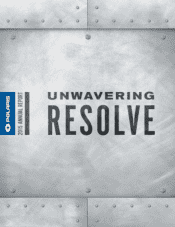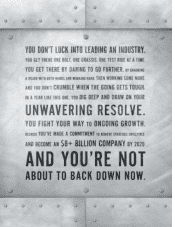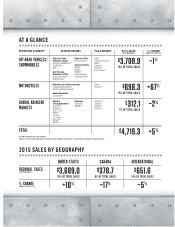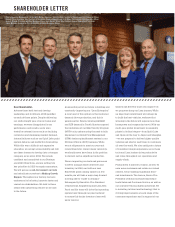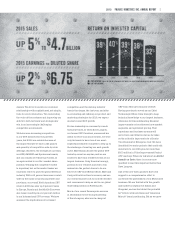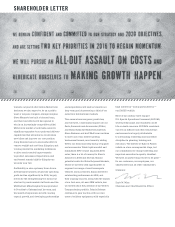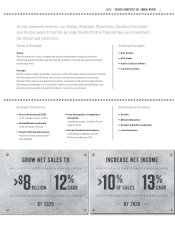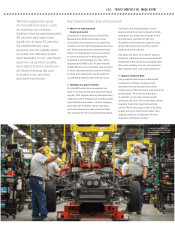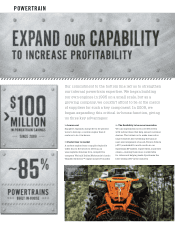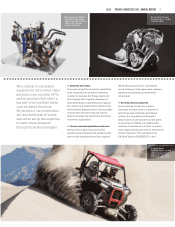Polaris 2015 Annual Report Download - page 9
Download and view the complete annual report
Please find page 9 of the 2015 Polaris annual report below. You can navigate through the pages in the report by either clicking on the pages listed below, or by using the keyword search tool below to find specific information within the annual report.
2015 POLARIS INDUSTRIES INC. ANNUAL REPORT 7
Our focus includes three critical areas:
>> Move to a customer and
dealerpullmodel
Continuing to implement our Retail Flow
Management (RFM) pull model across
our product lines focuses us on improving
customer service, better managing inventory
and better responding to consumer trends.
While it’s challenging to move an industry
to a new mindset, we’ve been gradually
achieving it one business at a time. We’ve
implemented RFM for All-Terrain Vehicles
(ATVs), Motorcycles, Slingshot, and a portion
of Parts, Garments and Accessories (PG&A).
In2016, we’ll expand the model further to
our O-Road Vehicle (ORV) side-by-sides.
>> Optimize our plant network
For the RFM model to be successful, we
have to be able to build and deliver products
quickly. That requires having manufacturing
capacity to meet demand and locating plants
near high-demand areas to reduce shipping
time and cost. To better utilize our plants,
we’re focusing each on key products while
still ensuring we have manufacturing agility.
Our Huntsville, Alabama plant—set to
begin production in Second Quarter2016—
epitomizes our plant Lean strategy. Itwill
provide direct capacity for ORV and
Slingshot while freeing up capacity at our
Spirit Lake motorcycle facility, to better
balance network capacity.
The plant will allow us to deliver product
quickly to customers in the region and take
advantage of the strong local supplier base.
We’re also building it as our role model for
high-quality, lower-cost, Lean production.
>> Improve material flow
Our greenfield investment in Huntsville
enabled us to design a purpose-built
operation that incorporates the perfect
combination of flow and Lean manufacturing
technologies. We’ll also use principles
to optimize our product quality, speed,
inventory and costs. We’re installing a Plant
Logistics Center for improved material
control. We’re also using a Vehicle Holding
Center and Cross Dock model rather than
shipping vehicles to disparate, forward-
deployed, distribution centers.
We have aggressive goals
for the next five years—such
as reducing our average
delivery time by approximately
40percent and improving
quality by at least 25percent.
By implementing Lean
properly, we can significantly
increase our delivery speed
and reliability to our customers,
improve our product quality,
and reduce factory inventory—
all while reducing the cost
to produce our new and
innovative products.
>> By optimizing our plants, we
were able to increase Slingshot
production three times in2015
to meet demand

